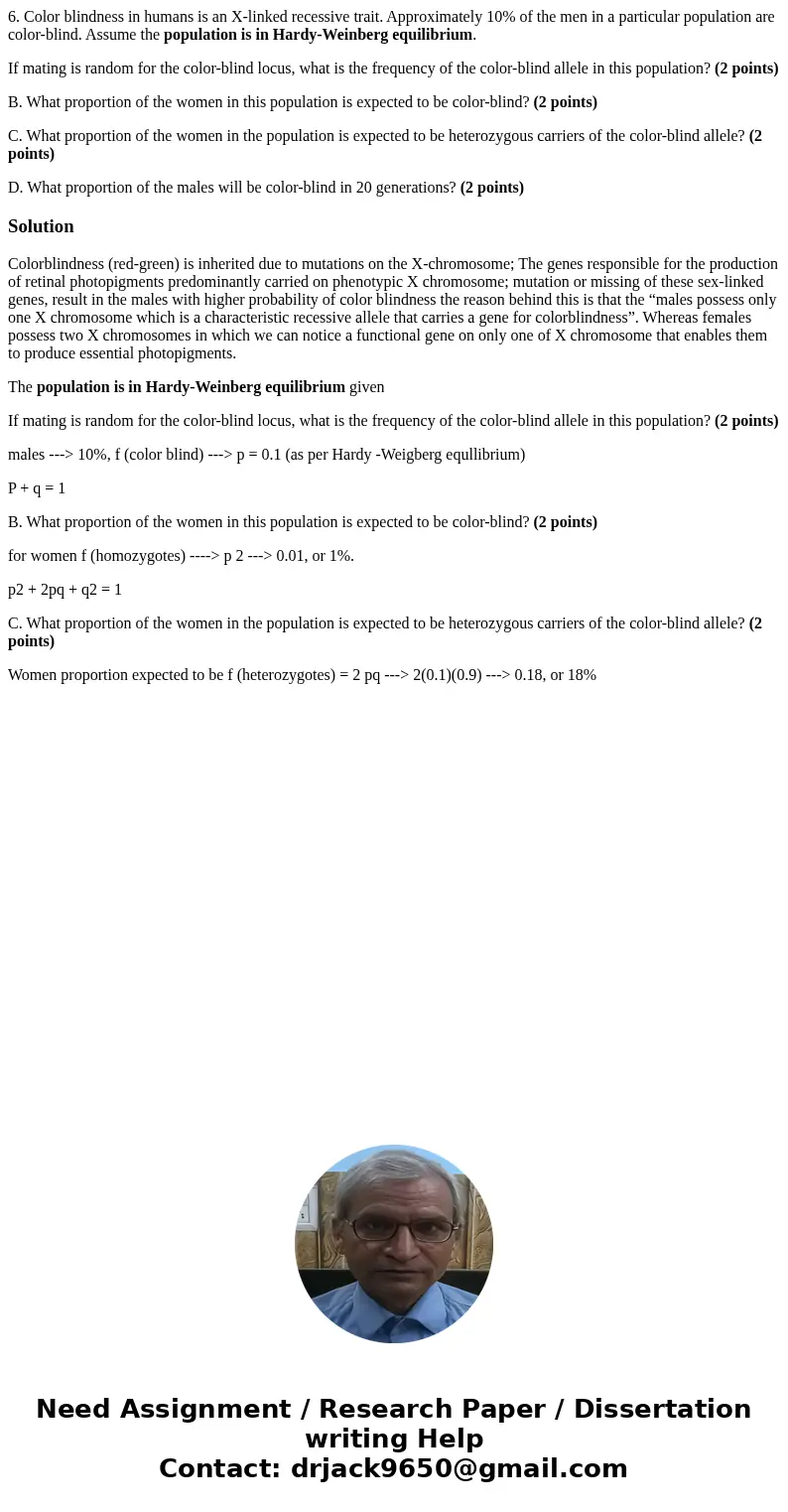6 Color blindness in humans is an Xlinked recessive trait Ap
6. Color blindness in humans is an X-linked recessive trait. Approximately 10% of the men in a particular population are color-blind. Assume the population is in Hardy-Weinberg equilibrium.
If mating is random for the color-blind locus, what is the frequency of the color-blind allele in this population? (2 points)
B. What proportion of the women in this population is expected to be color-blind? (2 points)
C. What proportion of the women in the population is expected to be heterozygous carriers of the color-blind allele? (2 points)
D. What proportion of the males will be color-blind in 20 generations? (2 points)
Solution
Colorblindness (red-green) is inherited due to mutations on the X-chromosome; The genes responsible for the production of retinal photopigments predominantly carried on phenotypic X chromosome; mutation or missing of these sex-linked genes, result in the males with higher probability of color blindness the reason behind this is that the “males possess only one X chromosome which is a characteristic recessive allele that carries a gene for colorblindness”. Whereas females possess two X chromosomes in which we can notice a functional gene on only one of X chromosome that enables them to produce essential photopigments.
The population is in Hardy-Weinberg equilibrium given
If mating is random for the color-blind locus, what is the frequency of the color-blind allele in this population? (2 points)
males ---> 10%, f (color blind) ---> p = 0.1 (as per Hardy -Weigberg equllibrium)
P + q = 1
B. What proportion of the women in this population is expected to be color-blind? (2 points)
for women f (homozygotes) ----> p 2 ---> 0.01, or 1%.
p2 + 2pq + q2 = 1
C. What proportion of the women in the population is expected to be heterozygous carriers of the color-blind allele? (2 points)
Women proportion expected to be f (heterozygotes) = 2 pq ---> 2(0.1)(0.9) ---> 0.18, or 18%

 Homework Sourse
Homework Sourse